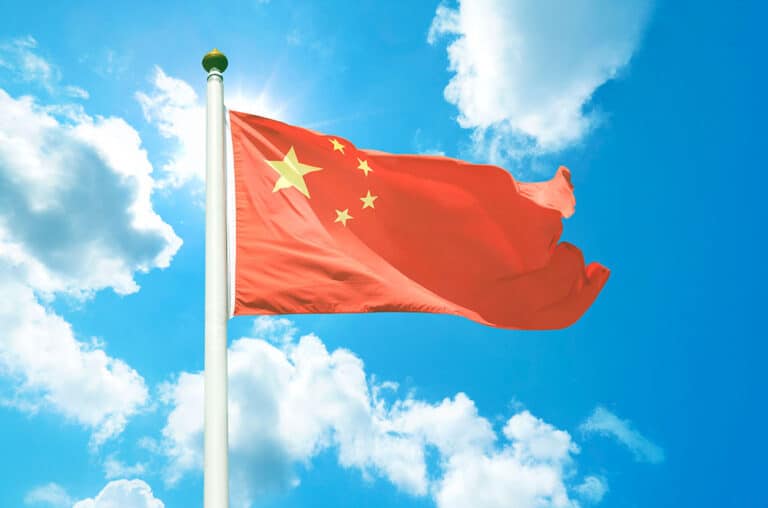
Article contributed by asset manager Ninety One
China’s inclusion into major bond indices is an exciting step for this asset class. We look at five reasons why this is an increasingly important asset class for investors’ portfolios.
China is not a typical emerging market. As the world’s largest official creditor nation, China is highly rated, the renminbi exhibits lower volatility versus other foreign exchange markets and its fixed income markets act as a great diversifier to developed market bonds.
Wilfred Wee and Alan Siow, Portfolio Managers at Ninety One, discuss why this is an increasingly important asset class for investors’ portfolios.
What makes ‘China bonds’ a unique asset class?
As the world’s second largest bond market, China fixed income offers multiple investment opportunities with significant scope for growth. Domestic financial reforms and the opening-up of China’s capital account has enabled foreign investors to increase their allocations to Chinese bonds, which are now included in all major global bond indices.
- The onshore CNY interbank bond market includes issuance by the sovereign and regional governments, policy banks, as well as large state related enterprises. One of the largest indices covering the market is the Bloomberg Barclays China Aggregate Index, which has tracking assets of US$6.8 trillion and includes more than 1,900 bonds issued by more than 300 entities1
- The offshore USD market is characterised by a broad mix of borrowers, the majority of whom are rated by the international agencies, namely Moody’s, S&P and Fitch. The JP Morgan Asia Credit Index has a market capitalisation of US$720 billion, providing more than 1,200 bonds from 400 issuers from Greater China1
- Other smaller Chinese bond markets include one for offshore CNH bonds, known as the ‘Dim Sum’ market and another for onshore CNY bonds, called the ‘Panda’ market where issuers are international non-Chinese entities.
What are the benefits of investing in China bonds?
In contrast with most international government debt currently registering negative real yields, China bonds supply a relatively high yield. In addition, the price behaviour of Chinese bonds is also usually less volatile, and as a result they have a superior risk-return profile. China’s high creditworthiness means that onshore CNY bonds also offer a relatively strong defensive profile to investors.
Offshore, Chinese USD bonds provide an attractive risk premium as credit spreads of Chinese companies have historically been up to 210 basis points higher than their BBB rated peers in the US2. When global markets have sold-off, offshore China bonds have often outperformed US credit spreads.
Another key benefit of an allocation to China bonds is that they provide a diversified source of returns. While diversification is a cornerstone of investing, it is increasingly hard to achieve, but because China’s growth and inflation outlook reflect domestic factors rather than global trends, this means that China bonds have a low correlation with major global risk asset classes. As a result, an allocation to China fixed income can potentially enhance a portfolio’s risk-reward characteristics by reducing overall portfolio volatility, while potentially increasing returns.
How do you view prospects for the RMB?
We expect the RMB to outperform its trading partners, albeit at a more modest pace after the significant rally in recent months, helped by exports boosting the trade surplus. Until outbound tourism picks up decisively, which we do not expect any time soon, the overall balance of payments is in China’s favour with the outlook for exports looking attractive. Headline geopolitical risks are also likely to de-escalate following the installation of a new US administration.
What are the expected sources of returns from investing in China bonds?
We expect that onshore CNY bond yields will remain range-bound, and possibly move higher as global COVID-19 vaccines are rolled out. Onshore CNY investment grade corporate bond yields can often be more attractive than their offshore USD investment grade counterparts and could provide attractive opportunities with less duration risk from time to time. For offshore Chinese USD bonds, we think that valuations have become rich and we see limited potential for capital gains. Most returns will come from holding higher yielding bonds over lower yielding ones, assuming prices remain constant. We prefer some select high-yield bonds with good underlying fundamentals and where valuations remain attractive over investment grade corporate.
What measures does Ninety One take to mitigate default risk on the onshore credit space?
We do not expect a meaningful increase in defaults in 2021 compared with 2020, but as recent volatility has shown, market sentiment can be fragile. Our process is to apply a rigorous bottom-up fundamental assessment of possible investments, and we do not consider an issuer unless we have carried out detailed credit analysis, which consists of a full financial model and investment note. We believe that our bottom-up fundamental investment process, combined with our in-depth industry and market experience has helped to avoid the problem issuers.
1 Source: Bloomberg, JP Morgan, 31 December 2020. 2 Source: JPMorgan, December 2020. Offshore, Chinese USD bonds: JPM Asia Credit Index – China; their BBB rated peers in the US: JPM US Liquid Index – BBB.
About Ninety One
Ninety One is an independent, active global asset manager dedicated to delivering compelling outcomes for its clients, managing more than £130.9 billion (USD180.6 billion) in assets (as at 31/3/21).
Established in South Africa in 1991, as Investec Asset Management, the firm started offering domestic investments in an emerging market. In 2020, almost three decades of organic growth later, the firm demerged from Investec Group and became Ninety One. Today the firm offers distinctive active strategies across equities, fixed income, multi-asset and alternatives to institutions, advisors and individual investors around the world.
































